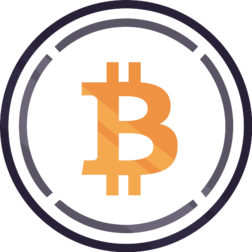XRP (XRP) is a digital currency and the native cryptocurrency of the Ripple network, a decentralized platform designed to enable fast and low-cost cross-border payments. XRP aims to facilitate seamless transfers of money and is used by financial institutions and payment providers worldwide. Here’s an in-depth overview of XRP:
1. What is XRP?
- XRP is both a cryptocurrency and the native asset of the Ripple network (often referred to as RippleNet), which is designed to enable fast, low-cost international money transfers.
- XRP operates as a bridge currency in Ripple’s payment system, helping financial institutions settle cross-border transactions quickly and efficiently.
2. How Does XRP Work?
- RippleNet: RippleNet is a network of independent financial institutions that use Ripple’s technology to facilitate international payments. XRP acts as an intermediary currency, facilitating transfers between two different fiat currencies.
- Consensus Mechanism: Unlike Bitcoin and Ethereum, which use Proof of Work (PoW) or Proof of Stake (PoS), XRP uses a consensus algorithm known as the RippleNet Consensus Protocol. This method does not require mining and allows for faster transaction confirmation times.
- Transaction Speed: XRP transactions are confirmed in 3-5 seconds, making it one of the fastest cryptocurrencies in terms of transaction speed.
- Low Fees: XRP has low transaction fees compared to many other cryptocurrencies, making it an attractive choice for remittances and cross-border payments.
3. Key Features of XRP
- Fast Transactions: XRP transactions typically take 3-5 seconds to settle, which is significantly faster than Bitcoin and Ethereum.
- Low Transaction Costs: XRP offers extremely low fees, typically a fraction of a cent per transaction.
- Scalability: XRP is capable of handling thousands of transactions per second (TPS), making it suitable for global payment networks and financial institutions.
- Decentralized Ledger: XRP operates on a decentralized ledger, meaning it is not controlled by any central entity, but instead by a network of independent validators.
4. Use Cases for XRP
- Cross-Border Payments: XRP is used by financial institutions and payment providers to settle international transactions quickly and at a low cost. XRP acts as a bridge currency in the Ripple network, enabling liquidity between different currencies.
- RippleNet: Ripple offers its enterprise-level blockchain technology through RippleNet, which is used by banks, payment providers, and digital asset exchanges to enhance their global payment systems.
- Liquidity Provision: XRP helps provide liquidity for institutions looking to facilitate quick and cost-effective transactions, reducing the need for traditional foreign exchange reserves.
5. XRP’s Role in Ripple
- Bridge Currency: XRP is used as a bridge currency in Ripple’s network, enabling financial institutions to settle cross-border transactions more efficiently. For example, if a bank in one country needs to send money to a bank in another country, XRP can be used to facilitate the exchange of currencies.
- Liquidity on Demand: XRP can be used to provide liquidity on-demand, enabling institutions to settle transactions without needing to hold large amounts of foreign currency reserves.
6. Advantages of XRP
- Speed: XRP offers transaction confirmation times of 3-5 seconds, making it far quicker than traditional banking systems and many other cryptocurrencies.
- Cost-Effectiveness: XRP’s low transaction fees make it an ideal solution for international remittances and cross-border payments, where traditional banking fees can be high.
- Scalability: XRP can process 1,500 transactions per second (TPS), significantly outpacing Bitcoin and Ethereum in terms of throughput.
- Enterprise Adoption: XRP is already integrated into several major financial institutions, making it a trusted choice for global payments.
7. Challenges of XRP
- Regulatory Uncertainty: XRP has faced regulatory challenges, most notably with the U.S. Securities and Exchange Commission (SEC), which filed a lawsuit claiming that XRP is a security, which could have significant implications for its status in the U.S. and globally.
- Centralization Concerns: Some critics argue that Ripple, the company behind XRP, has too much control over the supply and network of XRP, as Ripple holds a significant portion of XRP tokens.
- Market Sentiment: XRP’s price and adoption can be heavily influenced by legal battles, market conditions, and the decisions made by Ripple Labs.
8. XRP Price History
- 2017: XRP saw explosive growth, reaching a high of $3.84 in January 2018 during the cryptocurrency bull run.
- 2020-2021: XRP faced significant volatility, especially due to the SEC lawsuit, but it surged again in 2021 as the broader crypto market gained momentum.
- 2023-2024: XRP’s price has fluctuated with market cycles, influenced by legal developments and overall crypto market conditions.
9. How to Buy XRP
- Cryptocurrency Exchanges: XRP can be purchased on major exchanges such as Binance, Coinbase, Kraken, Bitstamp, and others. You can buy XRP with fiat currencies (USD, EUR) or trade it for other cryptocurrencies like Bitcoin or Ethereum.
- Peer-to-Peer: XRP can also be bought directly from other individuals through peer-to-peer (P2P) platforms.
10. How to Store XRP
- Hot Wallets: Software wallets such as Exodus, Toast Wallet, or Ledger Live support XRP for easy access and management.
- Cold Wallets: Hardware wallets such as Ledger Nano S and Trezor provide secure, offline storage for long-term holding of XRP.
11. XRP vs. Other Cryptocurrencies
- XRP vs. Bitcoin: While Bitcoin is mainly a store of value and digital gold, XRP is designed specifically for fast and low-cost cross-border payments. XRP has much faster transaction times and lower fees than Bitcoin.
- XRP vs. Ethereum: Ethereum is a decentralized platform for building decentralized applications (dApps) and smart contracts, whereas XRP is focused on facilitating cross-border payments. Ethereum has a broader range of use cases, while XRP is more specialized in global finance.
12. XRP’s Future
- Cross-Border Payment Growth: XRP’s future is closely tied to the growing adoption of blockchain technology in the global financial system. As more financial institutions adopt RippleNet, XRP’s use case will likely expand.
- Regulatory Clarity: The resolution of legal challenges, especially with the SEC, will play a significant role in determining the future of XRP. If the regulatory environment becomes more favorable, it could lead to broader adoption of XRP.
- Integration with Financial Systems: XRP has the potential to revolutionize cross-border payments, reducing costs and transaction times for global payments, and enabling real-time international money transfers.
Conclusion: XRP is a fast and cost-effective digital currency designed for cross-border payments. It is widely used in the financial industry and aims to improve global payment systems. While XRP faces challenges, especially in terms of regulation, its potential to disrupt traditional finance remains significant.





